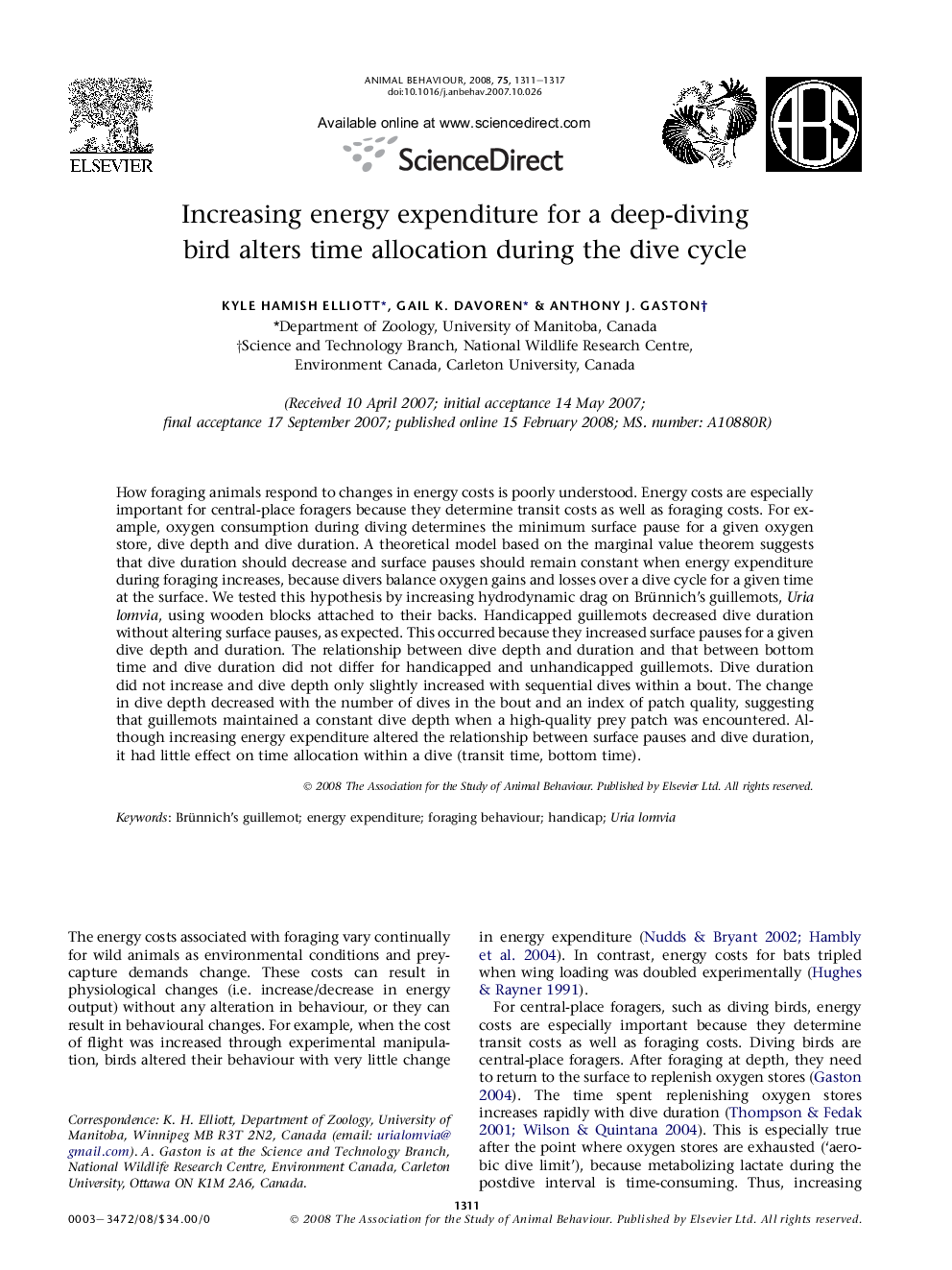| Article ID | Journal | Published Year | Pages | File Type |
|---|---|---|---|---|
| 2417746 | Animal Behaviour | 2008 | 7 Pages |
How foraging animals respond to changes in energy costs is poorly understood. Energy costs are especially important for central-place foragers because they determine transit costs as well as foraging costs. For example, oxygen consumption during diving determines the minimum surface pause for a given oxygen store, dive depth and dive duration. A theoretical model based on the marginal value theorem suggests that dive duration should decrease and surface pauses should remain constant when energy expenditure during foraging increases, because divers balance oxygen gains and losses over a dive cycle for a given time at the surface. We tested this hypothesis by increasing hydrodynamic drag on Brünnich's guillemots, Uria lomvia, using wooden blocks attached to their backs. Handicapped guillemots decreased dive duration without altering surface pauses, as expected. This occurred because they increased surface pauses for a given dive depth and duration. The relationship between dive depth and duration and that between bottom time and dive duration did not differ for handicapped and unhandicapped guillemots. Dive duration did not increase and dive depth only slightly increased with sequential dives within a bout. The change in dive depth decreased with the number of dives in the bout and an index of patch quality, suggesting that guillemots maintained a constant dive depth when a high-quality prey patch was encountered. Although increasing energy expenditure altered the relationship between surface pauses and dive duration, it had little effect on time allocation within a dive (transit time, bottom time).
